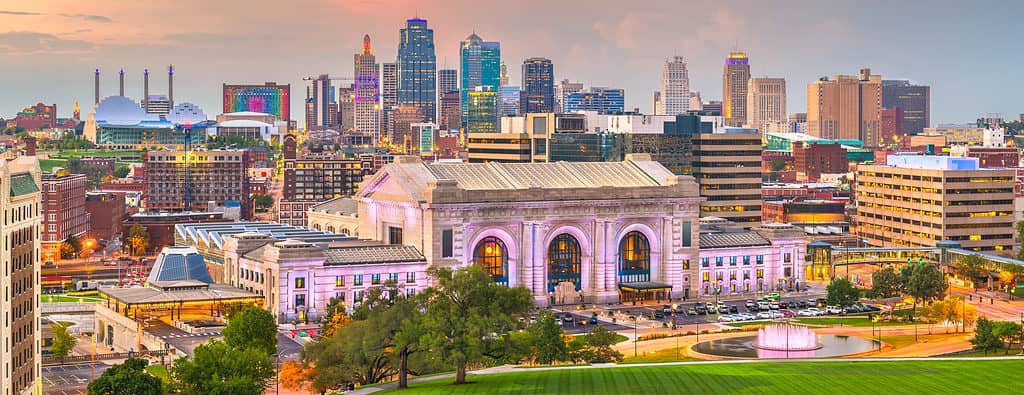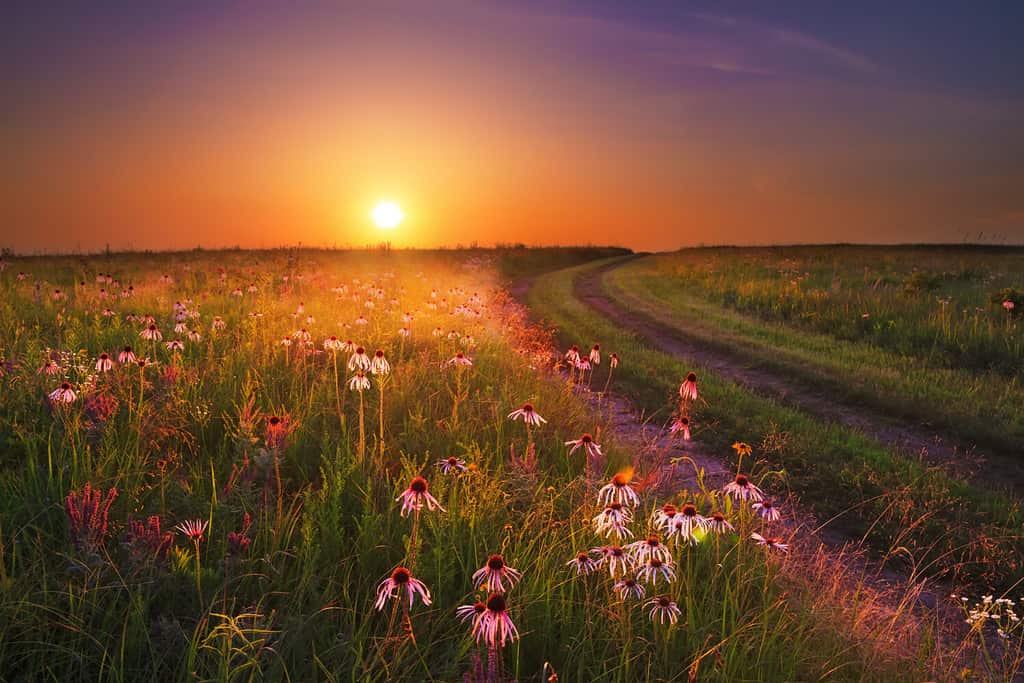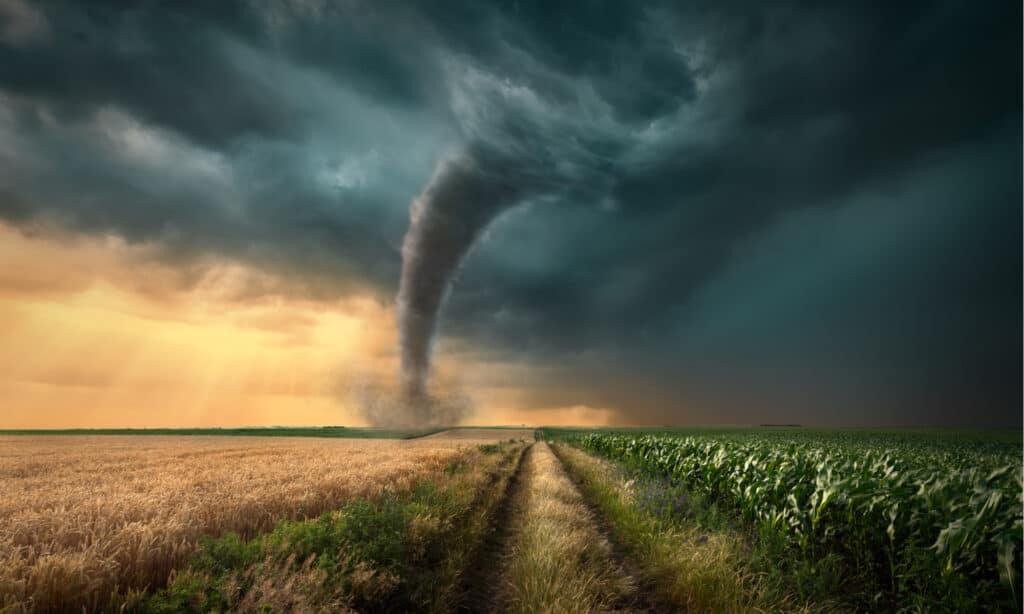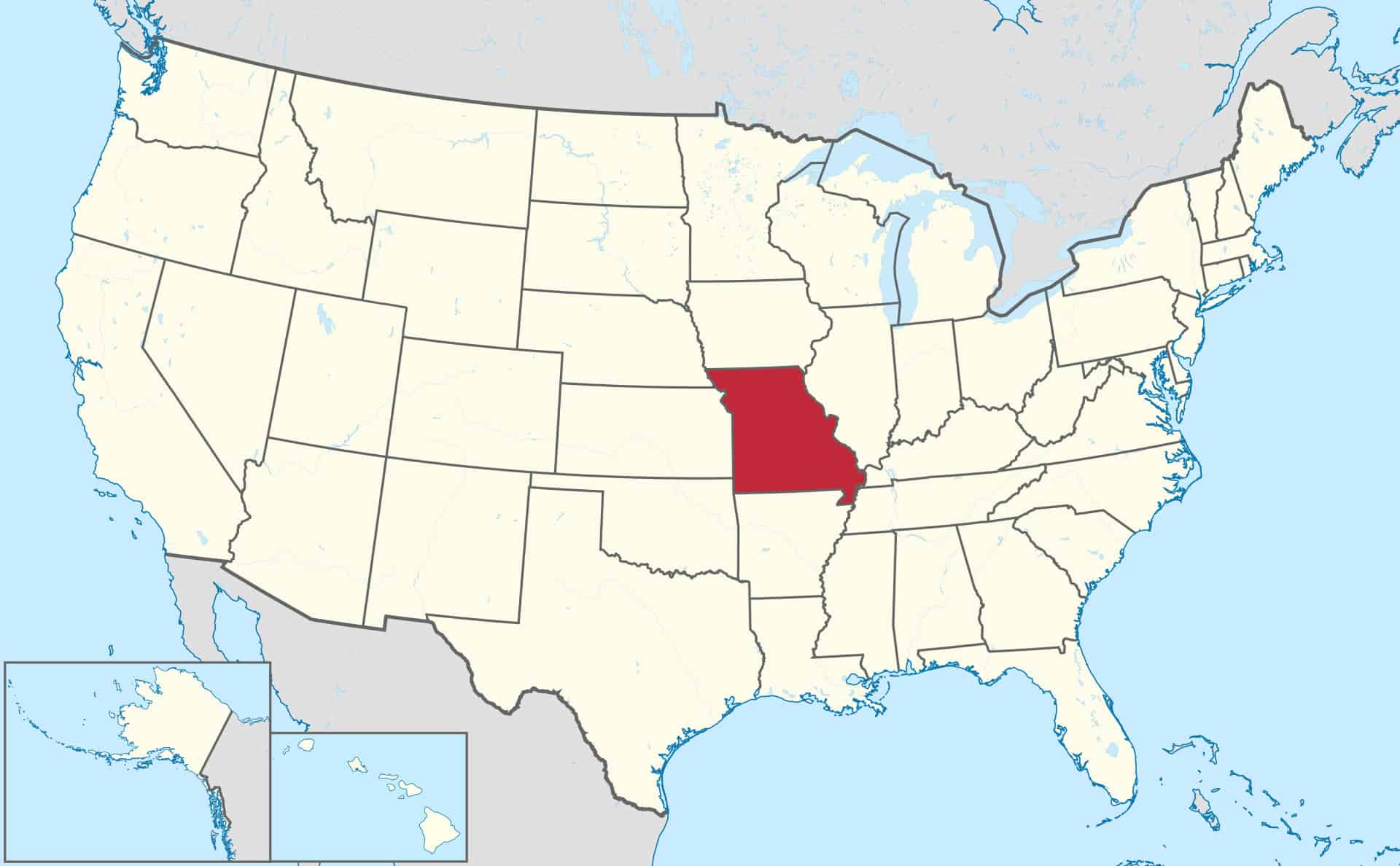Are you familiar with the midwestern state of Missouri? This beautiful state shares a border with eight other states and holds a lot of interesting history and recreation. Missouri is famous for its major agricultural role in the United States, its Kansas City-style barbecue, and for being the birthplace of ragtime music. Today, we’ll explore Missouri’s overall width, along with checking out some of the cool things you can find within its borders.
How Wide is Missouri?

How wide is Missouri? It’s 241 miles wide!
©MorphoBio/Shutterstock.com
Missouri is 241 miles wide from east to west. A trip from St. Louis to Kansas City, Missouri takes you almost directly horizontally across the state on highways 64 and 70 for a total highway distance of 248 miles. This trip takes an average of three hours and 36 minutes in regular traffic conditions. We’ve included a map of this route to give you a better picture of the overall width of Missouri. St. Louis, Missouri, and Kansas City, Missouri, are the two largest cities by population in this midwestern state and they rest on the eastern and western borders of Missouri. Because of this, we thought it was appropriate to use them as our example of how wide Missouri is.
Plenty of other states share a similar width to Missouri. For example, Wisconsin is 260 miles wide – only a 20 miles difference. We’ve included a table of states with widths similar to that of Missouri to help you have a better understanding of its size.
| State | Width (East to West) | Height (North to South) | Capital City |
|---|---|---|---|
| Arkansas | 270 miles | 240 miles | Little Rock |
| Georgia | 230 miles | 298 miles | Atlanta |
| Utah | 270 miles | 350 miles | Salt Lake City |
| Illinois | 218 miles | 385 miles | Springfield |
| South Carolina | 200 miles | 260 miles | Columbia |
Population of Missouri
The overall population of Missouri is 6.168 million people, as of the 2021 census. This is less than two percent of the overall population of the United States of America. Missouri is a “white-washed” state, with 60 percent or more of the population being “white”, “caucasian”, or of European descent. Minority populations are on the rise, especially in larger cities such as St. Louis, Kansas City, and Columbia. Still, the state only has a 12.4 percent Black population, while 26 percent of Black Missourians were in poverty in 2018. Only 11 percent of white Missourians were in poverty the same year.
The median age of Missourians is 38.7 years old and the median household income is $61,043. The average household income is $83,152, while the Per Capita income is only $33,770.
Largest Cities in Missouri

Kansas City, Missouri is the largest city in Missouri – both by population and by area.
©Sean Pavone/Shutterstock.com
We measure cities in two ways. The first way we measure cities is by population. The number of people in a city often dictates how we observe overall size. The second metric we judge cities on is area. The amount of area a city takes up also helps us decide on the size of a city as compared to another city. In this section, we will give you one table. It will rank the top five largest cities in Missouri by population. It will also show you their size in total area. You will notice that sometimes the smaller cities still take up more area.
For example, the largest city in the United States by population is easily New York City. This population-dense city covers 302.6 square miles and has a population of 8.4 million. However, it is dwarfed in land area by Jacksonville, Florida, which has a land area of nearly 875 miles squared while only boasting a population of 954,614 people.
| City | Population | Area |
|---|---|---|
| Kansas City | 508,394 | 319 square miles |
| St. Louis | 293,310 | 66.17 square miles |
| Springfield | 169,724 | 82.31 square miles |
| Columbia | 126,853 | 67.45 square miles |
| Independence | 122,088 | 78.42 square miles |
Geography of Missouri

There are three distinct geographical regions in Missouri – the northern plains, the Ozark Plateau, and the Mississippi Alluvial Plain.
©TommyBrison/Shutterstock.com
Missouri is very close to the geographical center of the United States. The center of Missouri is less than 500 miles from the geographical center of the United States – near Lebanon, Kansas. Missouri is one of two states that share a border with eight other states. The only other state to share a border with this many other states is Tennessee. What a record! The states that share Missouri’s border are Kentucky, Illinois, Arkansas, Oklahoma, Nebraska, Kansas, Tennessee, and Iowa.
Rivers.gov states that Missouri is home to approximately 51,978 miles of river. Missouri is the 21st largest state in the United States with 68,898 square miles of land and 811 square miles of water. This makes a total of 69,709 square miles. This land is divided into three distinct regions – the northern plains, the Ozark Plateau, and the Mississippi Alluvial Plain.
The northern plains are comprised of till plains that cover slightly more than one-third of the state. An abundance of streams cut through rolling country hills with varying elevations. Some stream valleys reach depths of 300 feet and widths of 20 miles, while others are as shallow as just a few feet and as narrow as a few feet. Elevations range from 400 feet above sea level to 1,200 feet above sea level.
The Mississippi River cuts through the Ozark region and is accented by rocky bluffs that rise up to 150 feet above the water. The rest of the region is a low dome with an even belt of highland that extends into the Shawnee Hills of Illinois. Finally, the Mississippi Alluvial Plain is the smallest and lowest part of Missouri, comprised of undulating countryside and swamps. Lakes and lagoons cover some of the 3,000 square miles and give a distinct appearance to the region.
Natural Disasters in Missouri

Tornados are a part of life in Missouri, where an average of 32 tornadoes strike annually.
©Rasica/Shutterstock.com
Every place comes bearing its own risks. Missouri is within the boundary of a region colloquially known as “Tornado Alley”. This region is more likely to experience tornados than any other region in the United States. Why is this region more prone to tornado activity? Let’s first look at the location. The central location of this state – and several others – exposes it to warm air from the Gulf of Mexico and cold northern winds from Canada. This, in combination with vast lowlands, creates a devastating effect. When cold air clashes with warm air in a large, flat area, storms of epic proportions can arise.
According to the St. Charles County website, an average of 32 tornados strike the state of Missouri every year. In 2006, over 100 tornados hit the state, setting an all-time high. The site claims that five of the 25 deadliest tornadoes in United States history occurred in Missouri.
Tornadoes are not the only natural disasters that occur on Missouri soil. The state is also prone to ice storms, severe lightning and thunderstorms, and flooding. That’s not to say it’s a bad place to live. Plenty of people, plants, and animals thrive in the midwestern state.
Wildlife in Missouri
There is far too much wildlife to describe living in Missouri, but we’ll briefly detail some of the common animals you might see if you live in or visit the state. Whether you’re spotting squirrels in your own backyard or taking in the wonder of white-tail deer, Eastern bluebirds, and coyotes in Mark Twain National Forest, you’re sure to be delighted by the wide range of wildlife to be found in the state.
There are several large mammals in the state, though some exist in small or endangered quantities. Elk, Texas longhorn cattle, and bison can all be found roaming parts of Missouri. Birds abound, as well. Bald eagles, turkeys, swans, geese, herons, and egrets all roam free across the state. And what about the brown pelican or the common loon? Yes, you can absolutely spot them, despite Missouri being a landlocked state.
Small mammals and reptiles? Undeniably. Under your feet, you may not even notice the scurrying of voles, golden mice, groundhogs, eastern moles, mudpuppies, and grotto salamanders. Overhead and in the trees? A variety of chipmunks, bats, flying squirrels, and grey squirrels. No, you won’t be disappointed by all you can find when you visit Missouri. All you have to do is take a look around.
Remember to do your best to leave no trace and try not to disturb wildlife when you do see it. Wildlife relies on a natural environment free of most human intervention to survive. Clean up your trash and try not to interact with the wild creatures you do encounter unless you are a trained professional. Nature thanks you.
Thank you for reading! Have some feedback for us? Contact the AZ Animals editorial team.








